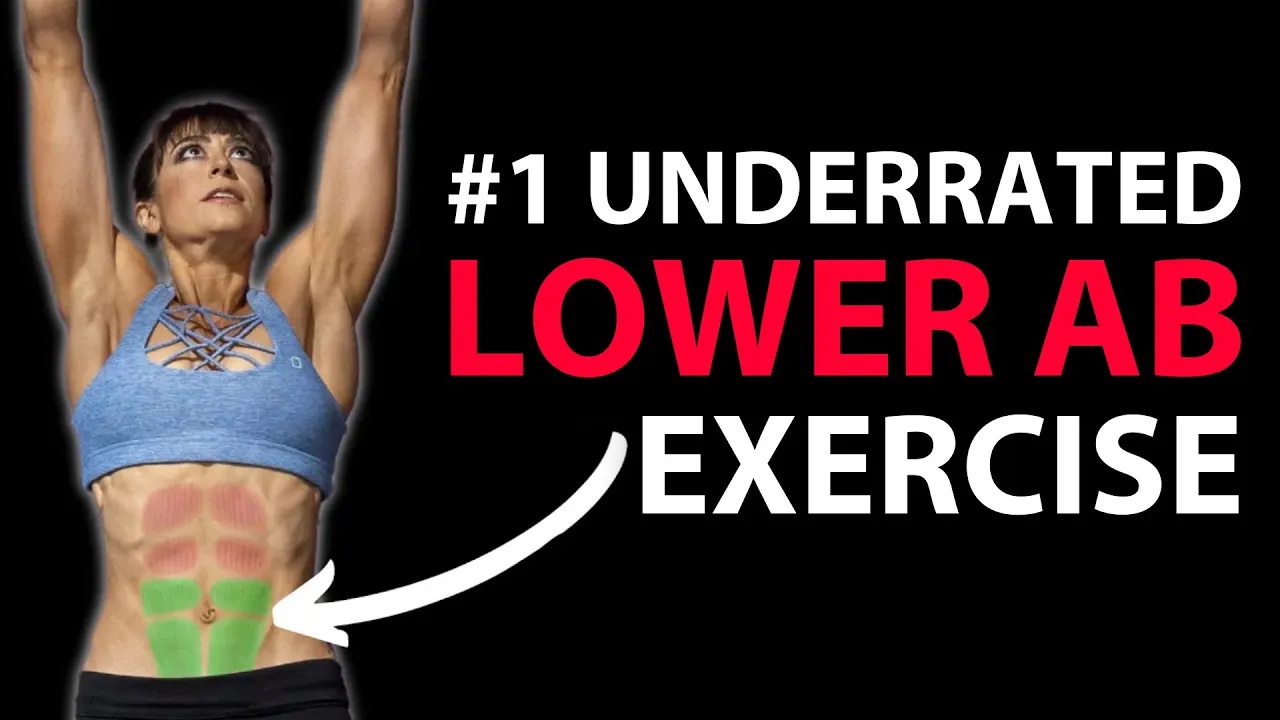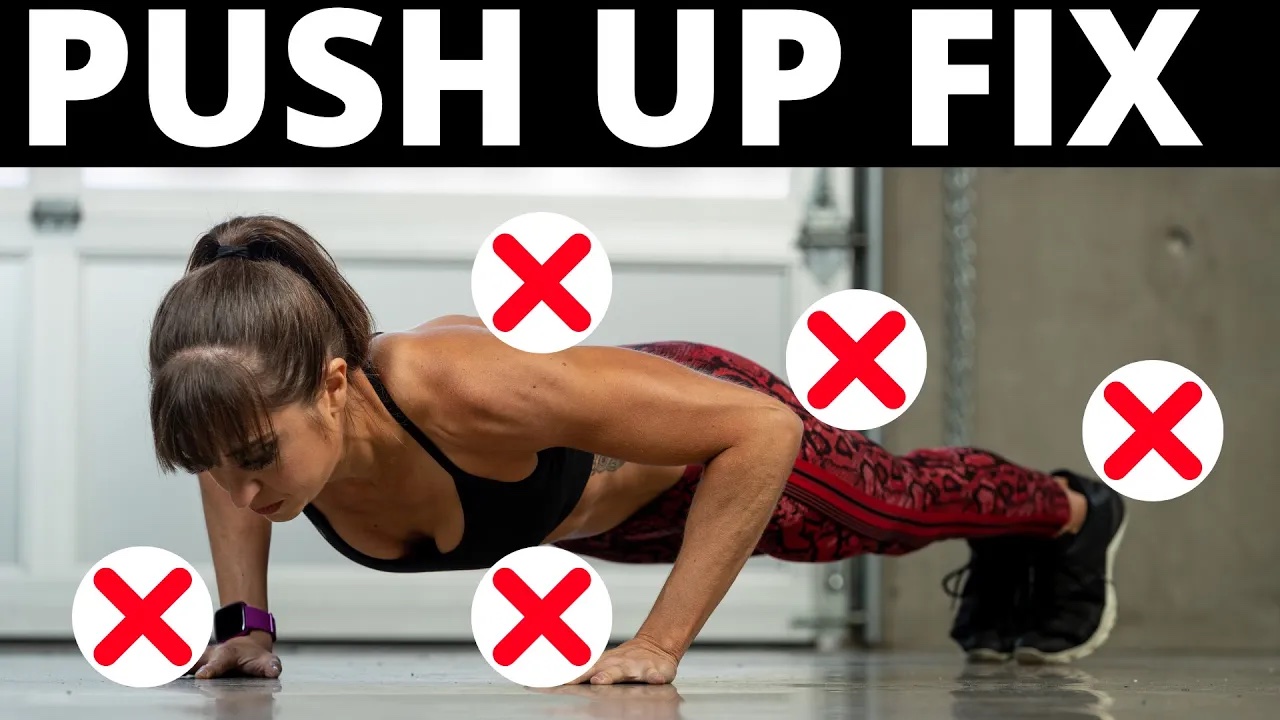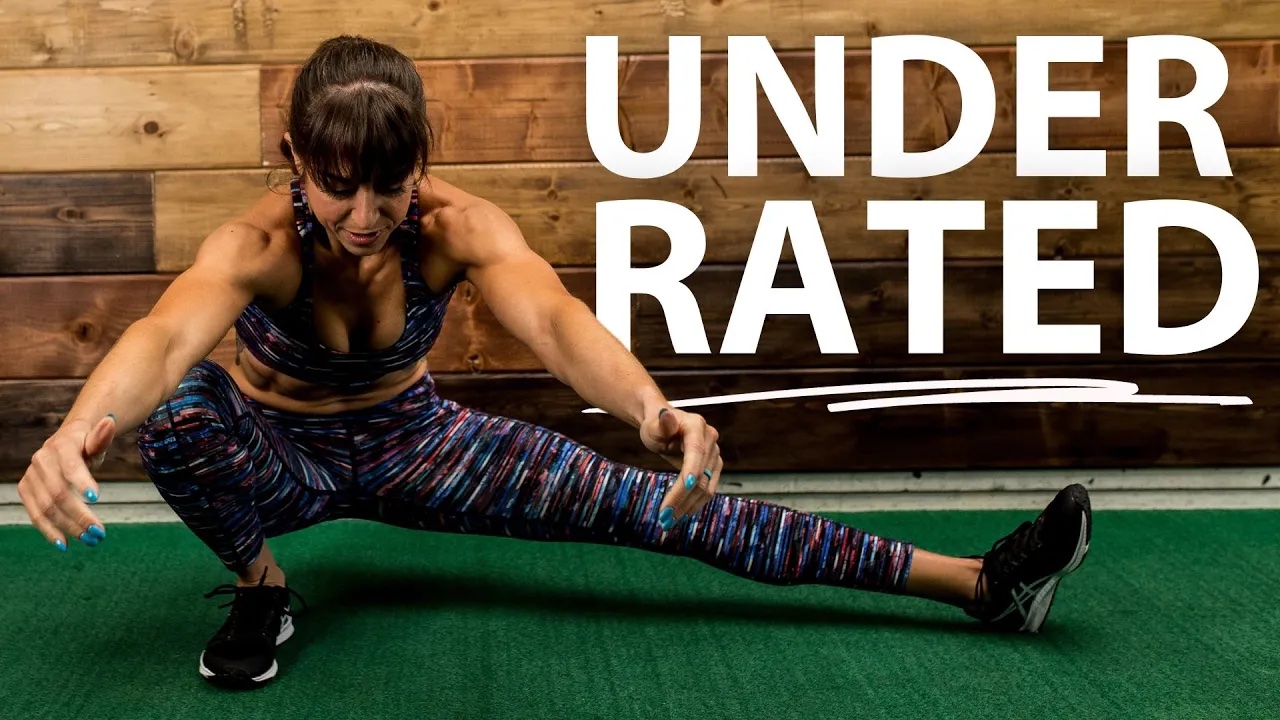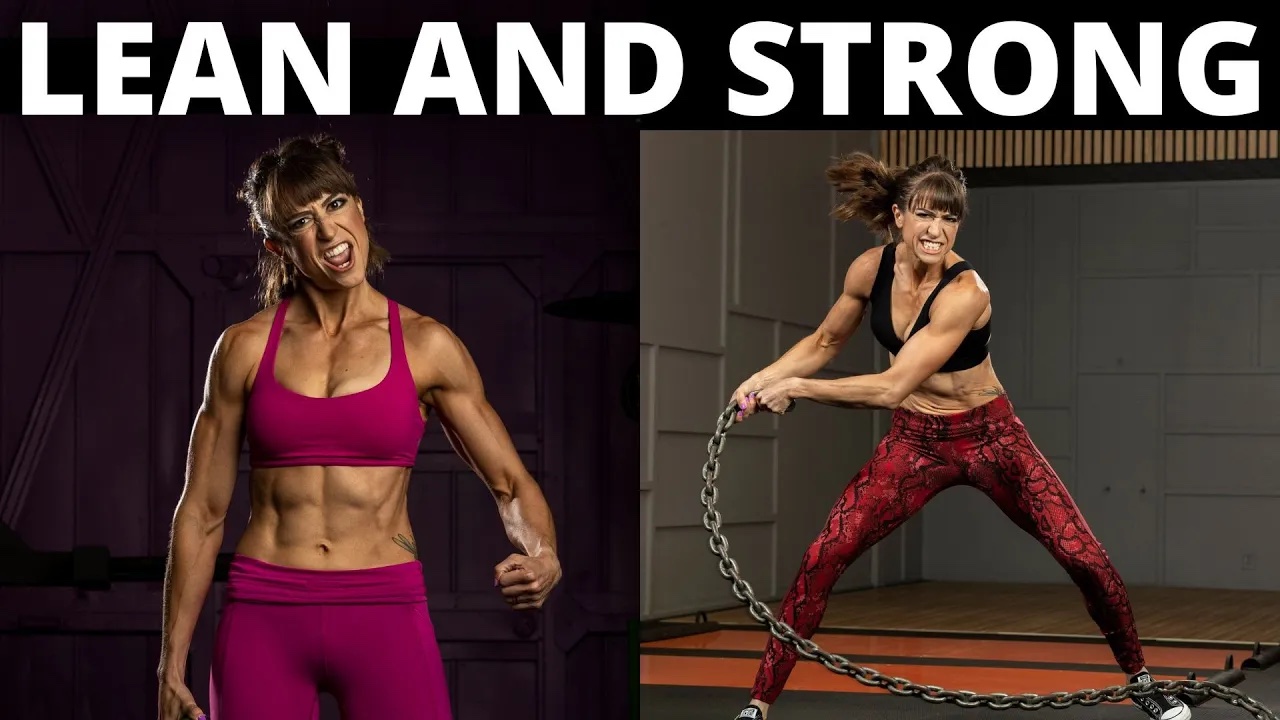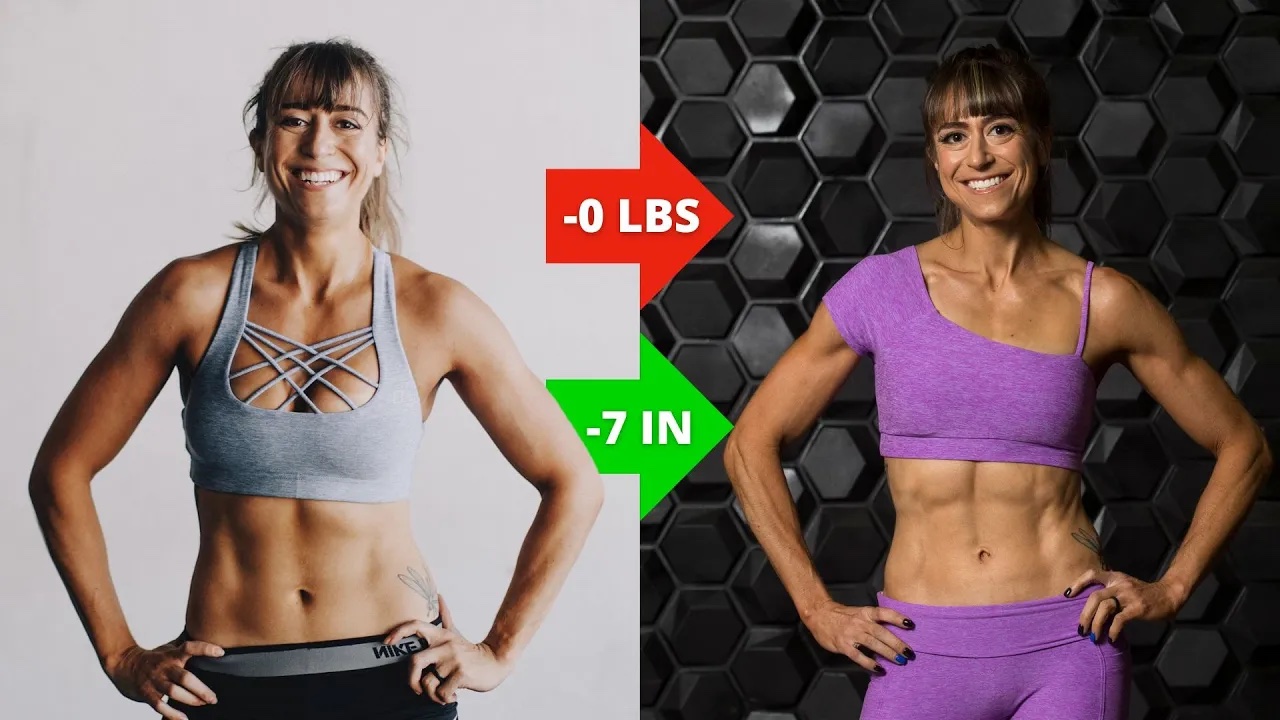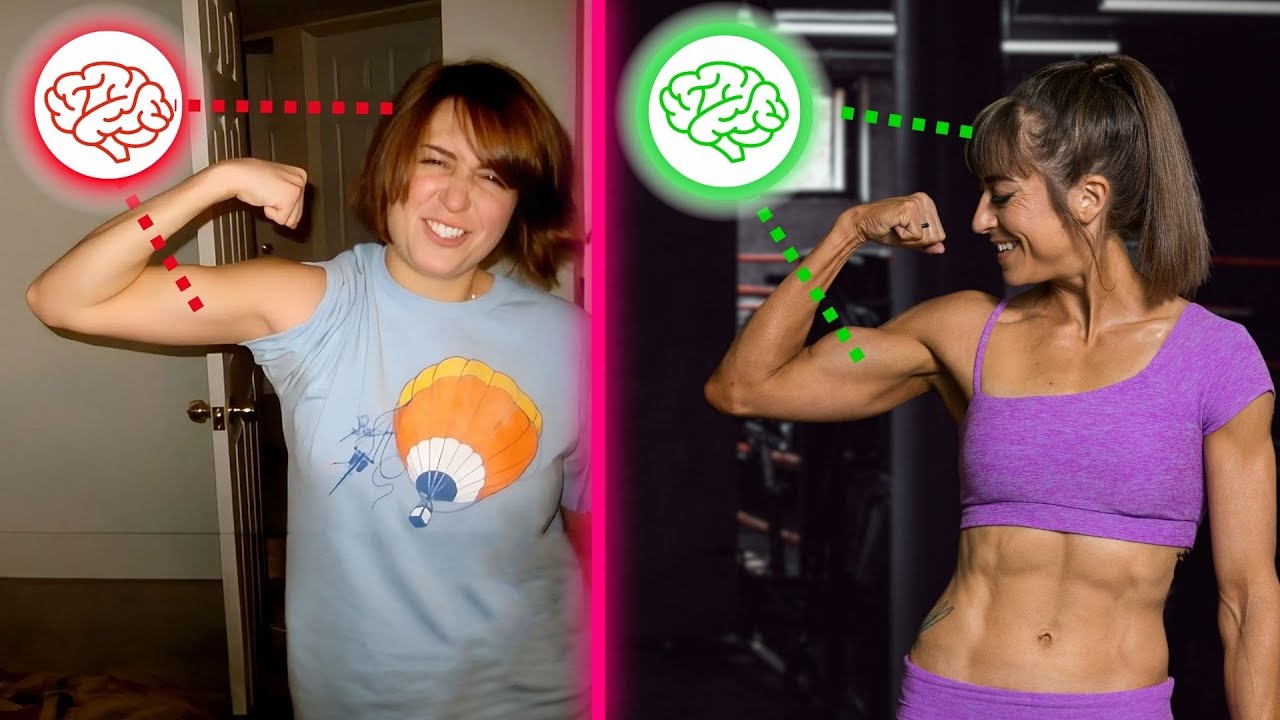
How Strong Is Your Mind Muscle Connection? (Take This Test)
How aware of your body are you?
Do you think you have an amazing mind-body connection?
Well…here’s a test to find out!
I mention this because too often we’re doing the right moves yet not seeing the results we want.
And it’s because we’re going through the motions with our training, mimicking proper form.
But proper form doesn’t guarantee proper recruitment patterns.
Aka just because a move looks pretty doesn’t mean we’re using the right muscles or seeking out mobility from the correct joints.
And the more advanced an exerciser you are, the more you can easily cheat and compensate.
But this can lead to overload and injury and you not seeing the results of your training you want.
That’s why in this video, I want to take you through a quick test to assess your mind-body connection.
And I want to do this test for an area many of us actually struggle to activate correctly…
OUR GLUTES!
To do this test, you’ll just be performing what seems like an oh so simple move and is an essential basic…
The Bodyweight Glute Bridge.

To do this glute bridge assessment…
I recommend setting up your phone camera to film yourself from the side and even from the knees up on a second round through.
This external feedback can then help you adjust form if you need to tweak things to get the correct muscles working.
As you perform this move, you are going to ask yourself 4 key questions at different points of the move to assess different muscles and even imbalances between both sides.
If you have the camera running, you can verbally answer.
Otherwise you may want a piece of paper next to you to make notes on!
Then set up as you normally would for the glute bridge.
I like to have clients place their feet flat on the ground at a comfortable distance from their glutes and bend their elbows to drive their upper arms down into the ground.
Then you want to bridge up.
Pausing at the top of the bridge, ask yourself…What do I feel working the most?
Lower Back – Yes or No?
Glutes – Yes or No?
Hamstrings – Yes or No?
Quads – Yes or No?
Relax back down.
Repeat the move a couple more times pausing to assess. Then record what you felt.
Then next, AS you bridge up, ask yourself…
What do I feel working FIRST?
Is it your hamstrings, glutes, quads or lower back?
Write down which muscle you feel engage FIRST.
Next, as you repeat the bridge, assess both on the way up AND as you pause for a second or two at the top, to ask yourself…
Do I feel one side working more?
Yes or No?
And if yes, which side?
Even make note of whether or not you just feel one side MORE or if you ONLY feel one side truly engaging.
The final assessment you want to do, is focusing on WHERE you truly feel your lower back, glutes or hamstrings working especially.
Do you feel the top of your butt under your SI joint working?
Yes or No?
Do you feel in the meat of your glute working?
Yes or No?
Do you feel right under your butt working?
Yes or No?
Or do you feel the middle of your hamstring working?
Yes or No?
Make a note, yes or no for each.
Now let’s break down what this information helps you understand about your glute engagement…
This may come as no surprise, but what you should have felt driving this movement is your GLUTES.
However, many of us do feel our lower back or hamstrings working and even taking over for our glutes during this move.
We even sometimes feel our quads trying to engage although we can also feel them stretching as the glute bridge IS a hip flexor stretch.
But often we don’t fully realize what is driving the movement when we get caught up only trying to focus on form.
We even simply think, “Oh my lower back is just weak and needs to get stronger.”
But really this shows that other moves are taking over when our glutes should be engaging.
This means we need to address our mind-body connection.
So if you found your lower back, quads or hamstrings compensating, I want to share some tweaks to your glute bridge form you may want to consider.
Especially if you felt under your butt or your hamstrings working, this can mean your hamstrings are synergistically dominant.
Yes…under your butt is often that hamstring origin area becoming overworked.
And sometimes it is us not realizing that it is NOT our glutes but actually our hamstrings working right there that can lead to hamstring tendinopathy or tendinitis.
Not to mention our hamstrings constantly being overworked is why they perpetually feeling tight no matter how much we stretch.
And when they are constantly overworked this can lead to knee pain, hamstrings strains and pulls and even perpetuate your lower back issues.
So making sure the correct muscles are working during a fundamental more focused movement is key so we can lift more and run faster and avoid injuries with more complex movement patterns.
I will also share some tips as well if you found that you had an imbalance between both sides. Sometimes this can mean we feel only one side working or that we feel our glute on one side but actually our hamstring on the other!
But first, how can you adjust your form if you don’t feel your glutes working like they should?
Here are 5 quick tips…
#1: Focus on maintaining that posterior pelvic tilt from the start and don’t get caught up in bridging higher.
This can help you make sure you’re using your abs to protect your lower back AND the posterior pelvic tilt engages the glute max.
Also, often in an attempt to bridge up higher, we arch our back at the top over extending our hips further, which overloads our lower back and can engage our hamstrings.
#2: Drive your knees toward your toes.
Focus on pressing through your entire foot and as you bridge up driving your upper arms into the ground, don’t push yourself backward.
Focus on driving those knees forward to help you avoid overusing your hamstrings.
This can even help if you tend to feel your quads working too.
#3: Focus on STOPPING the lift with your glutes.
So often in trying to work through a full range of motion, we stop engaging muscles to power the move.
Instead of trying to get a bigger movement, try and really squeeze your glutes hard to prevent yourself from being able to lift any higher. This focus on that activation of the glutes will make sure you’re driving true hip extension while avoiding anything else compensating!
#4: Pause and adjust.
At the top of the bridge, pause and then try little adjustments. If you move your feet in closer to your butt does that help? Or does moving them further away help you engage your glutes better?
While technically moving our heels further away toward a straight leg glute bridge engages more hamstrings, you may find, due to hip tightness that having your heels in too close to your butt engages the hamstrings more or makes you arch your back or even feel your quads.
So as you hold at the top, assess what you feel working and play around with even your posterior pelvic tilt or trying to engage each side.
Even put a hand on your glutes to try and give that tactile cue to feel them working to make that mind-body connection!
That can allow us to get the positioning we need!
#5: Try other bridge variations.
Sometimes we need to first adjust the variation we use to recruit the correct muscles. Slight changes to our posture and positioning can really impact things and even tools can provide an extra stimulus to improve our mind-body connection.
Even doing a move we feel working our glutes correctly prior to the one we struggle with can help us established the mind-body connection in that second move.
Two great variations to try if you’re struggling to engage your glutes can be the frog bridge as the external hip rotation can often help.
Or the mini band glute bridge. Pushing out on the band can help engage our glute medius which can help us better engage our glute max.
The band can also sometimes help if you struggle to get both sides working together!
Now To Address An Imbalance Between Sides…
I do want to note we will NEVER be perfectly evenly BUT we do want to note when one side isn’t pulling it’s weight.
When we have an imbalance this can lead to our stronger side taking over during other moves. This can lead to injury on that dominant side.
It can also mean that we risk injury on our weaker side if it is fighting to keep up.
So we want to address imbalances as much as possible and be conscious of them.
This is where unilateral glute activation may be key.
You may consider extra work for that weaker side, even swapping in something like the single leg reverse hyper to get that glute working.
Or you may use something like the 80/20 glute bridge to help you focus on each side more independently.
We have to recognize how challenging the full unilateral or single leg glute bridge is, which is why I recommend the 80/20 version instead.
If you can’t control the two-leg bodyweight bridge, there is a good chance your weaker side will continue to struggle with a full single leg variation.
But modify the move or even add in unilateral work to make sure you aren’t feeling other muscles take over for that weaker glute!
Bonus Tip:
And a final bonus tip, which can be helpful whether you’re addressing an imbalance or even just your hamstrings, lower back or quads engaging when they shouldn’t…
Foam Roll those overactive muscles PRIOR!
The impact of foam rolling is short-lived, but by rolling that muscle that wants to compensate before you then do the exercise, you can help interrupt that mind-body connection so you can better engage the proper muscles.
Especially if you feel only the hamstring on one side, trying rolling that muscle prior to the glute bridge to relax it to make it easier to establish that mind-body connection to your glutes!
Just remember, changes to our mind-body connection and recruitment patterns won’t happen overnight.
Our mind and body will want to default back into patterns we’ve created over time that now feel natural.
But if we don’t work to address them in fundamental moves like this, we put ourselves at greater risk for injury when we lift heavy, run or cycle.
Not to mention we may not be seeing the improvements in our other training that we want because we aren’t using muscles as efficiently to power our training!

